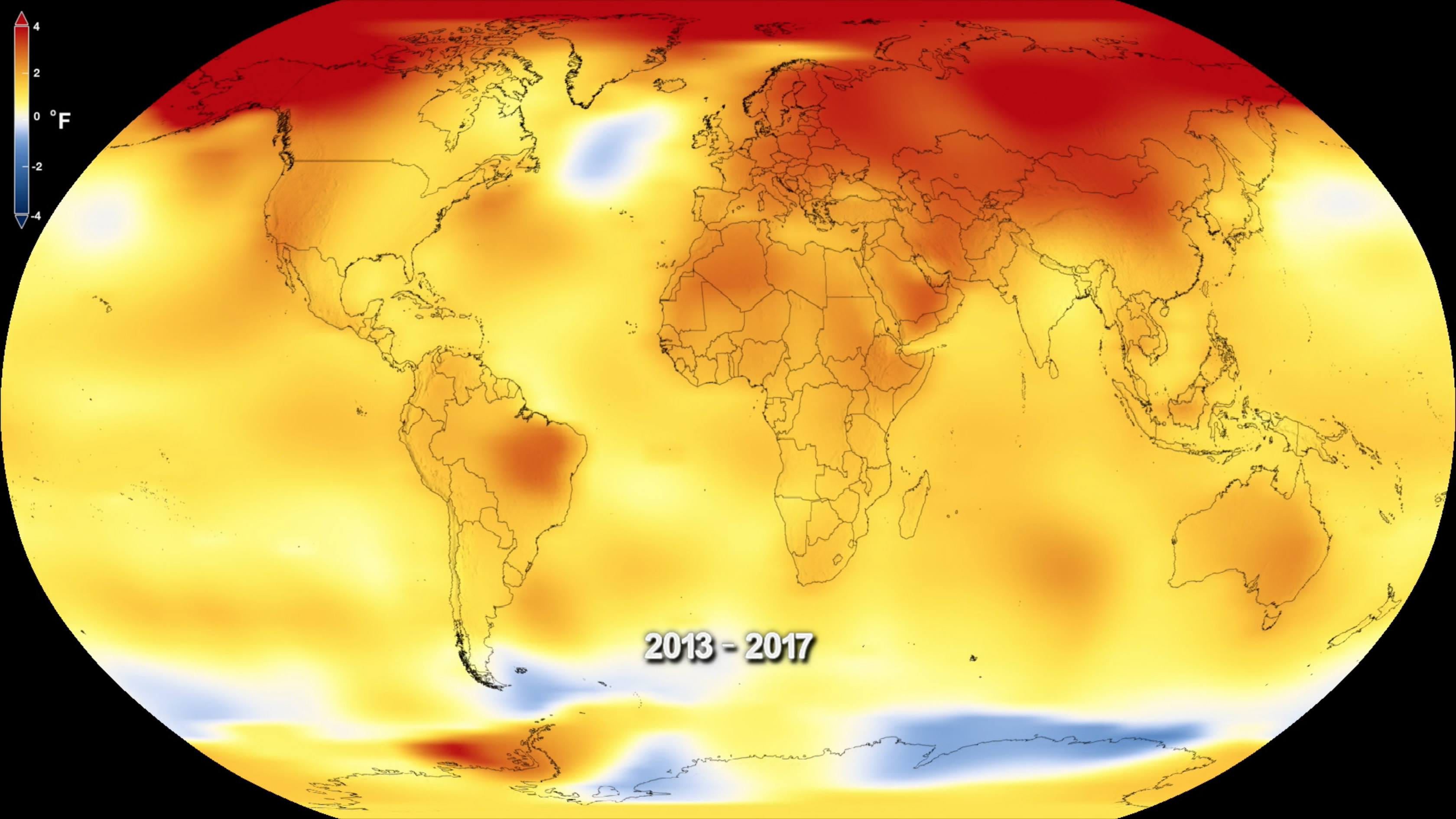
Tech & Sci
13:43, 28-Jan-2018
NASA: 2017 takes second place for hottest year
CGTN

Scientists are warning that the "climate tide is rising fast" as Earth’s surface temperatures in 2017 were the second highest since 1880, when global measurements first became possible.
Global temperatures 2017 were second only to 2016, which still holds the record for the hottest year; however, 2017 was the warmest year on record that did not start with an El Nino weather pattern, as the previous two years did.
Continuing the planet's long-term warming trend, globally averaged temperatures in 2017 was 1.62 degrees Fahrenheit (0.90 degrees Celsius) warmer than the 1951 to 1980 mean, according to scientists at NASA’s Goddard Institute for Space Studies (GISS) in New York. That is second only to global temperatures in 2016.
In a separate, independent analysis, NOAA scientists found that 2017 was the third warmest year on their record. The minor difference is due to different methods to analyze global temperatures used by the two agencies, although over the long-term the records remain in strong agreement. Both analyses show that the five warmest years on record all have taken place since 2010.
Last year, the US has experienced 16 extreme natural disasters including wildfires, droughts, and major hurricanes, as well as record-breaking Arctic temperatures across much of the country and surprising snowfall in areas of the country that don’t usually see much of snow. New York City experienced its coldest New Year’s Eve in 55 years, and Los Angeles hosted the hottest World Series game ever. Extreme weather have killed at least 362 people, costing a record $306 billion overall in US.

Winter storm in New York City /VCG Photo
Winter storm in New York City /VCG Photo

SITEMAP
Copyright © 2018 CGTN. Beijing ICP prepared NO.16065310-3
Copyright © 2018 CGTN. Beijing ICP prepared NO.16065310-3